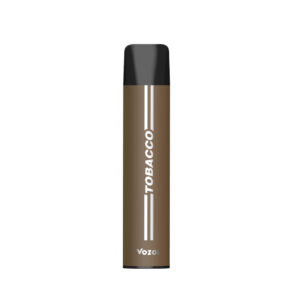Vape Pens vs Vapes: Which is More Environmentally Friendly?
The vaping industry has witnessed a meteoric rise, with vape pens vs vapes becoming ubiquitous. This surge begs an important question: between vape pens and disposable vapes, which is the more environmentally friendly option?
Table of Contents
- Vape Pens vs Vapes: Understanding the Basics
- The Environmental Footprint of Vape Pens
- Disposable Vapes: A Convenience with a Cost
- Battery Life and Environmental Concerns
- Waste Management: The Disposal Dilemma
- Chemical Composition and Its Environmental Impact
- Vape Pens vs Vapes: Carbon Footprint Comparison
- Innovations in Eco-Friendly Vaping
- Making an Informed Choice: Health and Environment
- Conclusion
- FAQ
Vape Pens vs Vapes: Understanding the Basics
Vape pens, known for their reusability and customizable options, contrast starkly with disposable vapes, which offer convenience at the cost of single-use disposability. Understanding their fundamental differences is key to assessing their environmental impact.
The Environmental Footprint of Vape Pens
Vape pens, with their reusable nature, initially seem like the eco-friendlier choice. However, their environmental footprint extends beyond mere reusability. The production and disposal of these devices, particularly their batteries and electronic components, pose significant environmental concerns.
Disposable Vapes: A Convenience with a Cost
Disposable vapes, while convenient, epitomize the throwaway culture. Their single-use nature contributes to increased waste and environmental strain, raising questions about their sustainability.

Vape pens vs vapes: Battery Life and Environmental Concerns
The battery life of a vape pen typically outlasts that of a disposable vape. However, the environmental cost of manufacturing and disposing of batteries, especially lithium-ion ones, is a point of contention in the vape pens vs vapes debate.
Waste Management: The Disposal Dilemma
Both vape pens and disposable vapes contribute to global waste, albeit in different ways. The disposability of single-use vapes leads to higher waste generation, whereas vape pens, though less frequently discarded, present challenges in electronic waste management.
Chemical Composition and Its Environmental Impact
The chemicals used in both vape pens and disposable vapes, including nicotine and propylene glycol, have implications for environmental health, particularly when these devices are improperly disposed of.
Vape Pens vs Vapes: Carbon Footprint Comparison
Assessing the carbon footprint of vape pens and disposable vapes involves examining their entire lifecycle – from production to disposal. Generally, the reusable nature of vape pens offers a slight edge in reducing carbon emissions.

Innovations in Eco-Friendly Vaping
The industry is witnessing innovations aimed at reducing the environmental impact of vaping. Biodegradable materials and improved battery technologies are paving the way for more sustainable vaping solutions.
Making an Informed Choice: Health and Environment
Choosing between vape pens and disposable vapes involves weighing health considerations against environmental impacts. While both have their pros and cons, the key lies in responsible usage and disposal.
Conclusion
In the debate of vape pens vs disposable vapes, the environmentally friendlier option is nuanced. While vape pens offer some advantages in terms of reusability and waste reduction, their environmental impact is not negligible. Ultimately, the onus is on manufacturers and consumers alike to prioritize sustainability in the world of vaping
Vape pens vs vapes: FAQ
Generally, vape pens are considered more environmentally friendly than disposable vapes due to their reusable nature. However, the environmental impact of their batteries and electronic components should not be overlooked. While vape pens reduce waste generation compared to single-use disposable vapes, they still require responsible disposal, especially of their electronic parts.
The primary environmental concern with disposable vapes is their contribution to waste. Being single-use items, they significantly add to the global waste problem. Additionally, the chemicals and materials used in disposable vapes can be harmful to the environment if not disposed of properly.
Yes, the batteries in vape pens, typically lithium-ion, can be recycled. However, it’s important to dispose of them at designated recycling centers that handle electronic waste. Proper disposal and recycling of batteries reduce environmental harm and conserve resources.
Yes, the vaping industry is seeing innovations aimed at reducing environmental impact. These include the development of biodegradable materials for vape products and advancements in battery technology to enhance efficiency and recyclability. Such innovations are crucial steps towards more sustainable vaping practices.